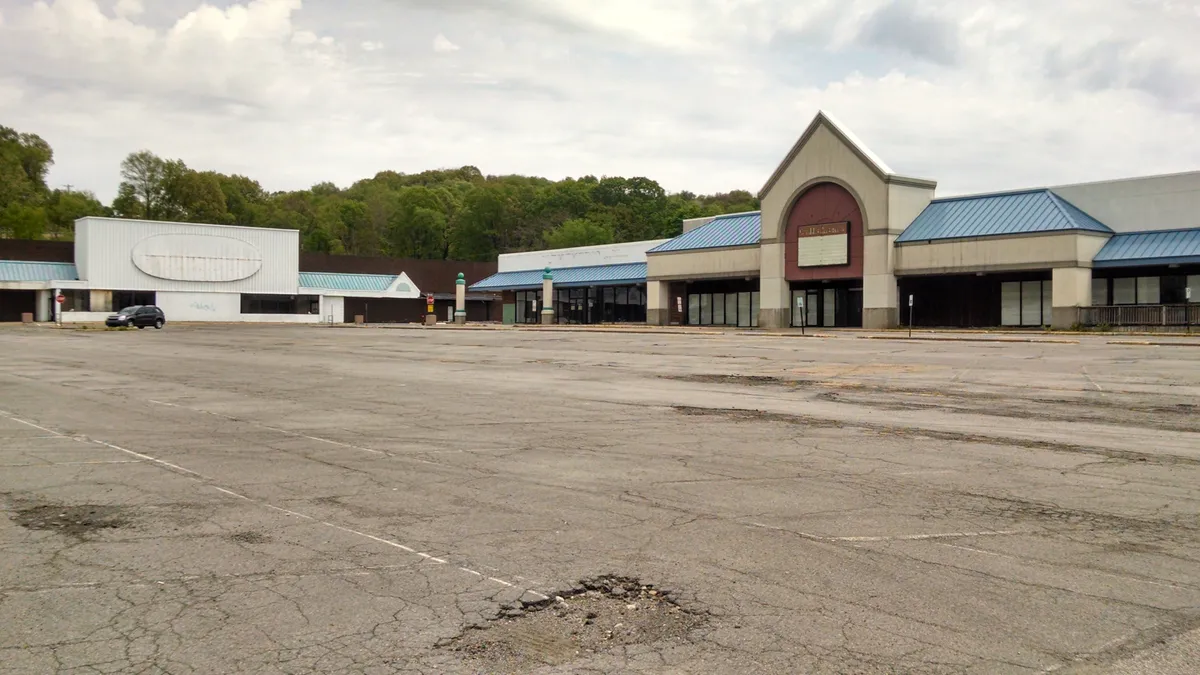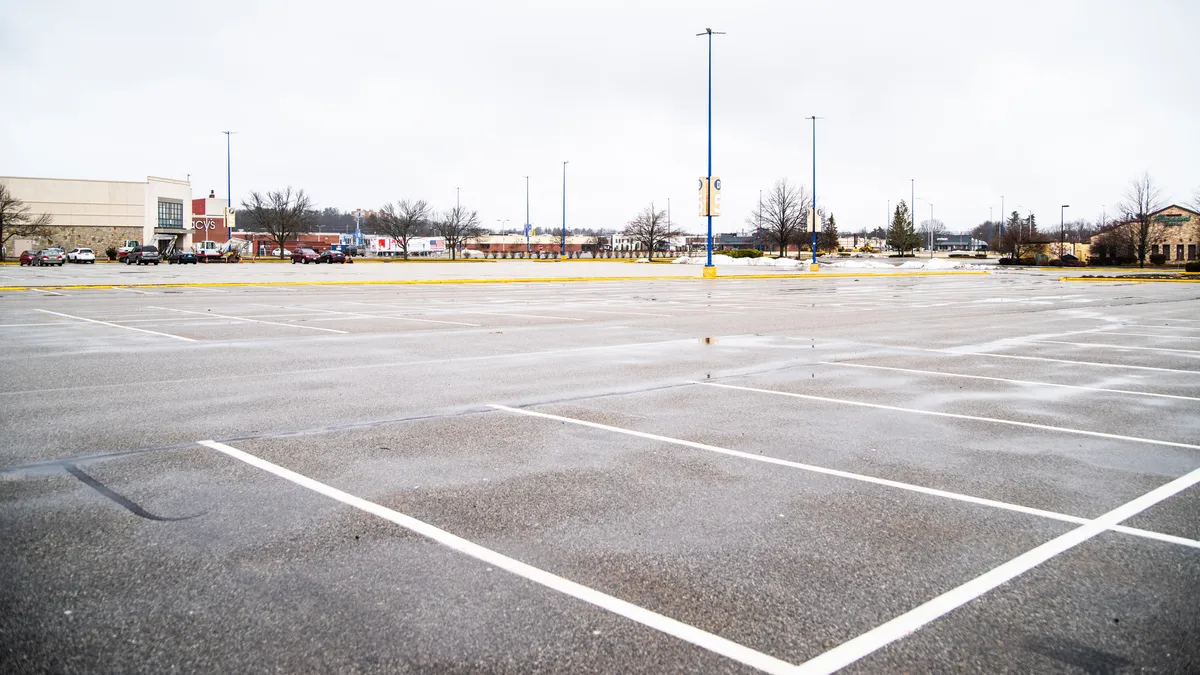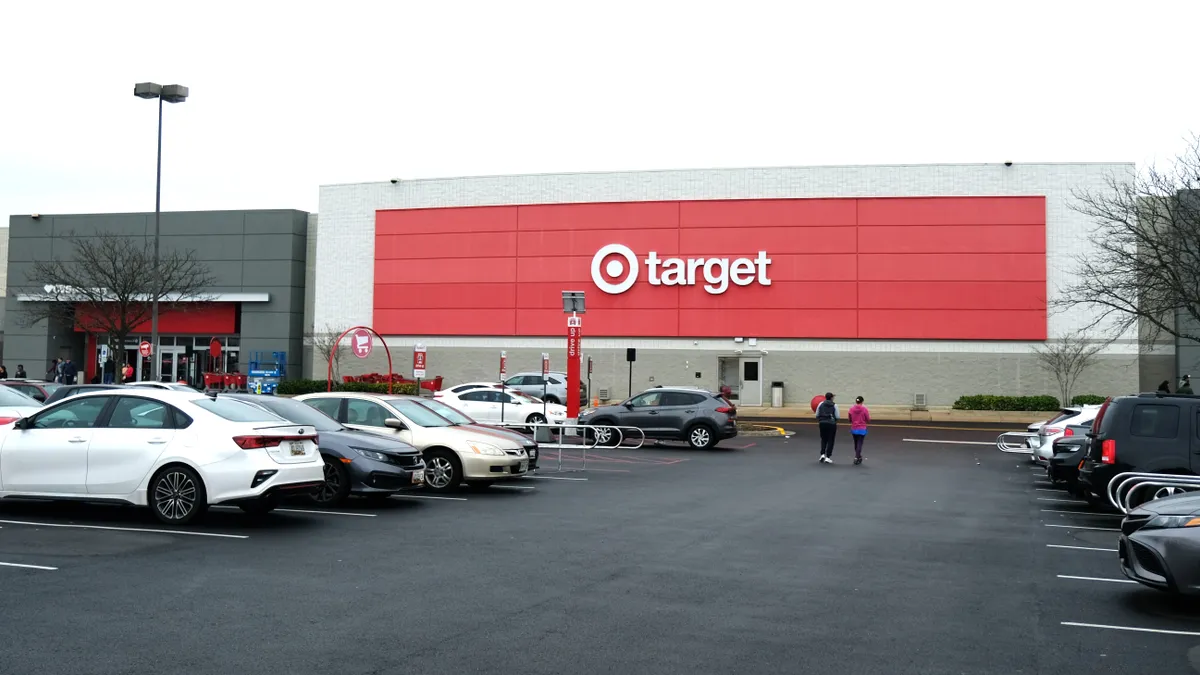If the mall killed Main Street, then this must be Main Street’s moment for schadenfreude.
Real Estate Investment Trust stocks have dropped 18% in the past year, Bloomberg recently reported, and while mall executives would prefer to see the current decline as a transformative period rather than a death knell, that may be wishful thinking.
Not all malls are created equal, of course. A-class malls are thriving, due to a premier selection of retail and restaurant tenants that successfully target the affluent communities they serve. However, B and C-class malls are struggling to find customers and keep tenants, as anchor department stores such as Macy’s and Sears, and fashion retailers such as Payless, BCBG and The Limited continue to shutter.
Although analysts are right to blame the internet in part for the decline of malls, department stores have also contributed to the problem, and sometimes in unexpected ways. “Department stores don’t want to hear this, but, today, anchor stores are really nothing more than fancy entrances into the mall,” Ray Hartjen, director of marketing for RetailNext, a business analytics group, told Retail Dive. “If shoppers are shopping the anchor department store, they’re there to do just that, and not browse the rest of the mall. For those shoppers going to other stores, if the anchor department store is closed, well, there’s always another entrance to the mall.”
“The mall is not dead, just changing. Give it a minute to get decent.”

Marshal Cohen
Chief Industry Analyst, Retail, NPD Group
While anchor stores have lost their appeal, so too has the idea of wandering in a mall. “The loss of an anchor store doesn’t really impact mall traffic much at all,” Hartjen said. “Today’s new shopping journeys are much more surgical in nature than they’ve been in the past. Gone are the days of browsing 20 or more stores at the mall on a single visit. Today, with all the pre-shopping done online, it’s get to the mall, visit a store or two, and then escape and get on with the rest of your life.”
The next question for malls is: What’s going to happen as more stores and customers pull away?
“There’s 1,200 malls in America, and class B and C malls are about a third of the inventory,” Glenn Brill, managing director at FTI Consulting, a financial advisory corporation, told Retail Dive. "So there’s a lot of retailers looking at their footprints, and there’s stores closing. Having worked for a developer, I understand the dilemma. A mall is roughly 110 acres. It has power, water, a ring road, a huge parking lot. All that infrastructure has been built and permitted, and in place, so you have two scenarios. You can attempt to reuse the existing structures, or you can scrap them.”
As malls coping with declining foot traffic reimagine the shopping experience, analysts are envisioning a very different future for them. Here are five transformational paths that American malls may go down over the next few years.
1. Malls as lifestyle centers
The question of what happens next is an intriguing one. One popular idea is that the malls will evolve into lifestyle centers, offering a wider range of options for visitors than simply shopping, eating and movies.
However, which tenants, and what kinds of lifestyles these new malls might cater to is still unclear. “Let’s start with reusing the infrastructure,” Brill said. “What can you do with that? Community colleges? A mega church? A call center? There has to be some compatibility. Malls have lots of open spaces, and given the amount of space, you’re not going to have a single tenant. There will be a mix of uses. You won’t find a single tenant to occupy 700,000 square feet.”
Malls that seek to market themselves for reuse will need to first consider the needs of the communities they’re serving. “In the right metropolitan areas, some larger malls will be rather easily converted into lifestyle, athletic and fitness centers, much like Chelsea Piers in Manhattan,” Hartjen said. “Space abounds, not only for parking, but also for hockey rinks, soccer pitches, running and biking trails, American Ninja Warrior-style obstacle courses and more. Plus, mall walkers offer an instant clientele.”
There’s also a case to be made that these vast spaces would best serve as public spaces, and include service-oriented tenants. “The mall is about to transform into more of a center for community living and lifestyle than it already is,” Marshal Cohen, chief industry analyst of retail at NPD Group, told Retail Dive. “Big stores will be knocked down and replaced by usable public space, as in a mall in Hilton Head, where half the structure disappeared, and that vacant land is now filled by a park, amphitheater, restaurants and a lifestyle center of small local boutiques.” Mega grocery stores, bowling centers, movie theaters and restaurants may also claim space from vacant anchor stores, Cohen said.
Some malls may also market themselves as experiential spaces for pop-up style events and group activities. “You’ve probably heard that younger generations in particular are placing greater value on experiences, not things,” Julia Fowler, co-founder of EDITED, a retail technology company, told Retail Dive. “As people look for more personalized and even fleeting experiences, there’s a burgeoning pop-up trend — check out companies like Collective Retreats — based around activities like wine tasting and in-tent massages. Particularly in picturesque and premium settings, it could be lucrative to lease mall land in an ‘on demand’ manner for mobile and collapsible retreats.”
This focus on the experience will be a critical element in mall reinvention, Fowler said. “For example, the Westfield World Trade Center in New York houses Oculus, a stunning destination in its own right, fusing it with one of the most incredible dining experiences in the city with a changing roster of the best chefs,” she said. “Westfield San Francisco houses Bespoke, a trifecta of coworking demo and event spaces within the mall. By redesigning mall spaces and storefronts to be based on aesthetically-pleasing interactions and experiences, rather than traditional destinations focused on shopping per se, malls have a higher chance of survival.”
A lot of mall reinvention will come with a digital twist, according to Greg Portell, lead partner in the retail practice of A.T. Kearney, a global strategy and management consulting firm. “Ironically, the same forces driving C and D malls out of existence — digital connectivity, e-commerce, the redefinition of convenience, declining brand loyalty, diminished interest in ownership and the idea of material status, and, above all, the demand for personalized offerings — will be the foundations of what will become broad-based retail repurposing,” he said.
Portell imagines that some spaces may convert to community-based ‘makers’ marts’ as former traditional malls become destinations for consumers looking for the freshest locally-produced food and beverages, shoppers who can’t wait overnight for customized soft goods or those interested in a range of one-of-a-kind objects ranging from handicrafts to furniture.
Instead of department stores, makers’ marts might be anchored by large urban farm and fish farming projects. One example is the UF002 De Schilde project in the Hague, which converted an abandoned office space into a large urban farm, capable of producing 50 tons of fresh produce every year, and 500 fish a week. “In addition to a large fresh market, these marts will house brew and distillery pubs, nutrition, cooking and wellness centers,” Portell said. “Leveraging 3D printing other technologies, including looms and ceramic tools, local craftsman will be on hand to advise shoppers and produce a range of personalized products from quilts to exterior doors.”
2. Malls as living spaces
Taking the idea of lifestyle centers one step further, some malls could turn into actual housing centers, repurposing their vast infrastructures to serve communities in need of more residential living spaces.
“Larger malls present a bigger challenge, but also come with perhaps bigger opportunities,” Hartjen said. “Property transformers salivate at the idea of cutting them up and converting into condominiums and apartment residences, much like classic old high schools and factories in many metropolitan areas. After all, common spaces are often already extravagantly outfitted with fountains and the like, restaurant and cafe properties are on-site, and multipurpose retail is already built and established.”
These new housing centers could be marketed and sold as next-level gated communities, complete with all the amenities. “Housing may find its way in, becoming the new luxury standard in affordable living,” Cohen said. “Look for young executives to find their way to these centers. The lure of having entertainment right outside their home will become a big selling point.”
Cohen also sees a place for more practical services. “Beyond food and entertainment, medical services will also find their way to malls that have some life left in them, from outpatient clinics to dental facilities,” he said.
The idea may work especially well if these spaces are targeted to specific communities and demographics in need of the unique capabilities mall housing might be able to offer. “While earlier efforts to move retail into gated, retirement and adult care communities played to mixed results at best, it’s perhaps easier to imagine how we might reverse engineer the idea and, along the way, repurpose C and D malls, especially if those malls are in rural America,” Portell said.
“The concept is simple. Former anchor department store space would be converted into condominium living. The retail space would be transformed into dynamic health facilities featuring emergency medical services, gyms and fitness centers, short-term hospitalization, rehabilitation services, pharmacies and home healthcare equipment retailers," he added. "Large sections of parking lot would be removed and replaced with green spaces and community or commercial gardens.”
These transformed malls could also house local restaurants, theaters and even live entertainment venues, as well as providing a home for continuing adult education and retraining programs. Additional retail space could be devoted to a worship and spirituality center servicing the needs of multiple religions, and a yoga instruction, holistic wellness and related services, Portell said. “The entire complex would be available to all residents of the outlying community as well,” he said. “It would help address the needs of rural citizens who often find themselves without an adequate number of physicians, clergymen and other professionals.”
To that end, others imagine these newly refurbished malls would be targeted exclusively to aging communities. “Some ideas that are a little grander,” Brill said. “If you took a mall, it could be turned into a senior city, and have various types of senior living, assisted living, all types of environments. Geriatric care, a little retail, movie theater — a little senior city.”
3. Malls as distribution and fulfillment facilities
Another idea circulating is to remove the entertainment aspect of malls completely, and turn them into practical operations aimed at helping service a population that increasingly buys its goods online.
“Without exception, malls are blessed with easy, convenient access by freeways and highways, and that makes the spaces ideal for light manufacturing and assembly, service and distribution centers,” Hartjen said. “With a little re-zoning effort, smaller malls and strip malls can be instantly transformed.”
Cohen also envisions a new wave of business parks that encompass all the critical aspects of online business. “Malls will also become home to corporate satellite and shared offices in areas where local representation is important for service industries,” he said. “Also, look for regional retailers that own locations to convert some of their existing, difficult-to-sell real estate into regional distribution/fulfillment centers, to aid in delivery of products sold online. Other fulfillment companies will look to take over obsolete retail space to lower their costs.”
According to Fowler, that idea isn’t as far-fetched or as far away as one might imagine. “With abandoned malls offering huge blocks of real estate, there are countless ways that the land can be used,” she said.
“Firstly, as more and more people go online to buy anything and everything, empty malls are the perfect space for online retail inventory expansion. As the largest e-commerce company that recently announced that it’s adding more than more than 30,000 part time jobs to support its growth, we imagine that Amazon could not only use the land to house its goods, but even serve as a base for its hundreds of drones in the future.”
4. Malls as mixed-use spaces
Malls do not, of course, need to be only one thing. As retailers continue to explore options, there may be spaces that end up serving multiple purposes.
“Fulfillment centers are compatible with malls,” Brill said. “Amazon is going to open stores, and brick and mortar will do more online. And in digital retailing, which is fundamentally the catalog business, the margins are better in brick and mortar. So it all comes back to the notion that malls are not going to be one thing or another. It’s about whether the owner has the opportunity to offer some sort of consolidated fulfillment center. The mall may be able to facilitate that, like running little warehouse. That would enable retailers to have a smaller store footprint, with little showrooms.”
The idea of mixed use solves a bigger problem, which is that it may be difficult to get an entire mall’s worth of potential tenants all on the same new page.
“More problematic will be malls who have empty chunks of space to fill, but not all their space to fill, like when an anchor tenant packs up shop and goes away,” Hartjen said. “It’s easier to reinvent with a complete blank slate than with one half full. Grocery can take up a lot of space, as well as entertainment centers like cinema or even bowling alleys. An interesting concept is to turn anchor spaces into smaller, more right-sized performing arts venues for musicians and other performers.”
5. Tearing down the mall
Of course, the blank slate idea is extremely appealing, especially financially.
“The mall is fundamentally a redevelopment site,” Brill said. “It won’t be straight reuse. They’ll see how much they can save, but it’s 110 acres, and the best use will probably be mixed use. Even the senior city concept would still be mixed use. Things themed to senior citizens. Are there other themes? Maybe a university? Everybody is trying to drive a town center concept.”
That said, some of the unusual ideas that have been floated around are, according to Brill, simply impractical. “Nobody’s going to build a casino just because a mall closed,” he said. “They’re going to build a casino because they want to be in that market. An empty mall might offer the opportunity, and they might like the site, but adaptive reuse is an expensive process that banks don’t like.”
What’s the next step?
Whatever the next phase of malls is, it’s coming — and it’s coming soon. As an overstored country begins to see retail leases expire and forego renewals, B and C and D-class malls will need to figure out how to change if they want to survive.
“A lot of the communities where the malls exist are going through depopulation, and exporting their money,” Brill said. “It’s called leakage. Consumers buy on Amazon. So ultimately you need a use for malls that’s aligned with the local marketplace, and you have to replan 110 acres.”
Whatever the new mall iteration is, Brill said, it will have to bring something to the table that people want. “Ultimately what you need to create is an experience,” he said. “And you don’t want to piss people off, so the experience you want to create is one of convenience.”
Ultimately, the hype about widespread mall failure may be a reflection of retail’s growing pains rather than its quietus. “The mall is not dead, just changing,” Cohen said. “Give it a minute to get decent.”






















